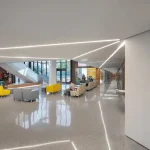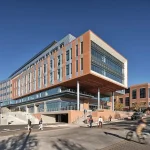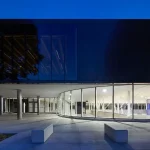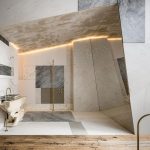Carnegie Hall Studio Towers New York, Architect, Building, NY Architecture Design
Carnegie Hall Studio Towers, NYC
Manhattan Building Project – design by Iu + Bibliowicz Architects, USA
Feb 25, 2011
Carnegie Hall Studio Towers
CARNEGIE HALL STUDIO TOWERS ARCHITECTURAL VISION
Design: Iu + Bibliowicz Architects LLP
The architectural transformation of the Studio Towers creates a unified identity, improves operational efficiency, and makes physical and visual connections that allow the venerable institution to function as a comprehensive performance and music education complex for the first time in its 120-year history.
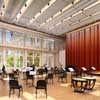
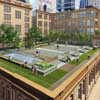
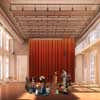
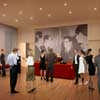
Carnegie Hall Studio Towers renders : studio amd
“For 120 years, Carnegie Hall has been known as one of the world’s greatest concerts halls and as a premier destination for the world’s finest artists,” said Clive Gillinson, Carnegie’s Hall’s Executive and Artistic Director. “With the creation of these newly-expanded facilities, we seek to build on Carnegie Hall’s amazing history, ensuring that our building continues to revitalize itself to meet the needs of the twenty-first century, remaining a place as important to the future of music as it has been to the past.”
Mr. Gillinson announced that a $25 million leadership gift from Joan and Sanford I. Weill and The Weill Family Foundation will provide important support for these major improvements to Carnegie Hall’s landmark building. With this generous gift, $181.5 million has been raised in support of the $200 million project. Among the pledges made to Carnegie Hall’s capital campaign is major funding from New York City and New York State. The total also includes $56.5 million in net proceeds from bonds issued through the Trust for Cultural Resources from the City of New York.
“We’re enormously grateful to Joan and Sandy Weill for their remarkable ongoing support of Carnegie Hall and their strong belief in this project,” said Mr. Gillinson. “We’ve long admired their central commitment to music education, most notably through the establishment in 2003 of the Weill Music Institute, Carnegie Hall’s music education program. Their generosity will certainly have a an enduring impact, enabling Carnegie Hall to continue to evolve in ways that will serve people through music in the best way possible for generations to come.” Mr. Weill, a trustee since 1983, has been Carnegie Hall’s chairman since 1991.
“I want to express Carnegie Hall’s gratitude for the extraordinary endorsement by New York City,” he continued. “Our thanks go to Mayor Bloomberg, Commissioner Levin, and Commissioner Handy for making this project possible, as well as to Speaker Christine Quinn, the City Council, and Manhattan Borough President Scott Stringer for their major support. We look forward to the completion of these renovations and the vital new opportunities they will offer, allowing us to expand Carnegie Hall’s service to the people of New York.”
Existing conditions
Carnegie Hall is composed of three separate buildings: the three performance venues were built in 1891, and the north and south Studio Towers were built in 1894 and 1897, respectively. The building has undergone several renovations, mainly focusing on the performance venues.
The transformation of the Studio Towers will support Carnegie Hall’s growing needs and put music education under the same roof as the performance spaces. It will also reorganize the backstage and support spaces for Carnegie Hall, which have been dispersed throughout the three buildings.
Along with the reorganization and repurposing of the Studio Towers, there are significant infrastructure changes that will bring the building up to current standards in terms of life and safety issues, energy efficiency, environmental comfort, and accessibility.
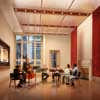

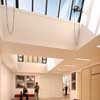
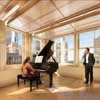
Carnegie Hall Studio Towers renders : studio amd
Services
Iu + Bibliowicz Architects LLP provided master planning, programming of the interior space, facility planning, and architectural and interior design services.
Total project size
167,000 SF total renovated space
North Tower: 37,000 SF
South Tower: 130,000 SF
Program
North Tower, floors 5-16
• Floors 5 and 6 will contain the hall operations (including lockers for ushers and other performance venue crews as well as a docent lounge)
• Floors 7 and 8 will house the archives, which include a research room and high density storage. This relocation will place the archives above the Rose Museum (the public display space for archival material) and within the Education Wing
• Floors 9 through 16 will house the Education Wing, accommodating the Weill Music Institute (WMI) and The Academy
South Tower, floors 1-12
• Floors 1 through 6 will be dedicated to the backstage areas of Stern Auditorium and Weill Recital Hall, which are currently only on three floors
• Floors 10 through 12 will house the Education Wing, accommodating WMI and The Academy
Key goals of the transformation
The transformation allows the three buildings to function as one, because it:
• Reconfigures the interior of the Towers to integrate music education spaces, administrative offices, and backstage support areas
• Unifies all of the public spaces in the Studio Towers to be consistent with those of the performance venues
• Opens up the interior of the upper floors and creates visual connections between the Studio Towers in order to improve circulation and enhance the user experience
• Creates a contemporary architectural vocabulary that is derived from the historic elements of Carnegie Hall and the Studio Towers
Key architectural features
• Preservation of Key Historic Elements including three preservation zones that:
– Restores and enhances key details, such as historic cast-iron staircases, fireplace mantles, window frames, plaster cornices, vaulted ceilings, window frames, door moldings, and baseboards
– Replicates existing features, such as room trim details and paneled doors consistent in character with historical areas throughout
– Creates a consistent identity for the three separate entrance lobbies (Education Wing, administrative offices, and backstage entrance)
• A new Music Education Wing with 24 new music rooms, including practice rooms, teaching studios, and ensemble rooms that:
– Fit into the volume and character of the Studio Towers
– Have the correct proportions and finishes needed to achieve interior acoustic quality and exterior noise isolation
• A new Roof Terrace, located above the performance venues on the 9th Floor, that will become an outdoor piazza for Carnegie Hall and a central gathering space for students, teachers, artists, and staff
• Expanded Backstage Areas that will double in size from three to six floors and be fully ADA accessible. The second floor of the South Tower will be dropped approximately three feet to align with the height of the Stern Auditorium/Perelman Stage, enabling restoration of stage-left access. The design of the backstage areas will be upgraded to a level that is consistent with the quality and character of Carnegie Hall.
• Administrative Offices will be consolidated on floors 7 through 8, and 8M, and will be connected to both Studio Towers
Carnegie Hall Studio Towers New York images / information received Feb 2011
Location: Carnegie Hall, New York City, USA
New York City Architecture
Contemporary New York Buildings
NYC Architecture Designs – chronological list
New York City Architecture Tours by e-architect
23 East 22nd Street, Flatiron district
OMA
23 East 22nd Street
New Museum of Contemporary Art – Extension, SoHo
SANAA architects
Museum of Contemporary Art New York
56 Leonard Street
Herzog & de Meuron
Comments / photos for the Carnegie Hall Studio Towers page welcome
Website: www.carnegiehall.org/Information/Studio-Towers-Renovation-Project

